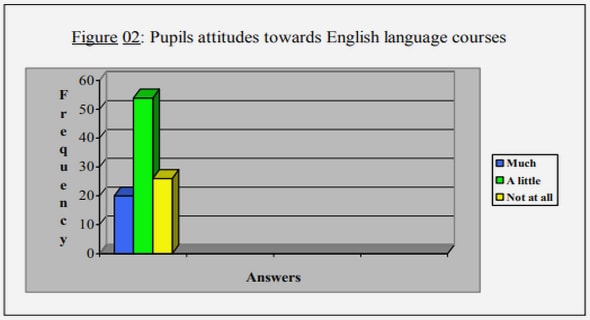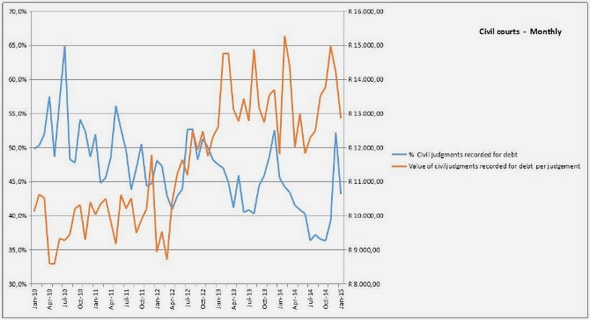Get Complete Project Material File(s) Now! »
Insight on the brown dwarfs formation mechanisms
The sub-stellar border defined by the hydrogen burning mass is a crucial dividing line with respect to further evolution of a candidate brown dwarf. Anyhow, there is no physical reason suggesting that this mass boundary should be related to their formation mechanism. Rather, the correct frame to deal with the possible formation scenarios is in elaborating theories working continuously from the low-mass stars regime to the one of sub-stellar objects.
In the traditional picture of low-mass stars formation, collapse and hierarchical fragmentation of molecular clouds (Shu et al. 1987) is assumed. This process involves the formation of circumstellar disk due to conservation of the angular momentum. The disk in turn is the birth place for extrasolar planets (see Section 1.2).
Brown dwarfs might either be the high-mass extension of extrasolar giant planets in the protostellar disk (first paradigm), or they form like stars, i.e. by direct gravitational collapse of molecular clouds and then fragmentation out of cloud cores, which should be cold and dense enough to become Jeans-unstable for the brown dwarfs masses range (second paradigm). The first formation paradigm (Stepinski and Black 2000) nowadays is attacked by a highly constrained observational feature: the so-called Brown Dwarfs Desert (see Section 1.1.4) . Instead, the second paradigm is supported by the spectroscopic classification of the coolest stars population encompassing the range appropriate to sub- stellar objects (see Section 1.1.2). However, the small cloud cores by which a brown dwarf should form have not yet been detected by radio observations, and – on the theoretical ground – there is an important constraint regarding the opacity limit for a fragmentation process which can become Jeans-unstable. More in detail, when a critical mass density is reached during the collapse, the gas becomes optically thick and thereafter the Jeans-mass increases (Low and Lynden-Bell 1976). This phenomenon should prevent the formation of brown dwarfs by direct collapse of clouds. Nevertheless, assuming that brown dwarfs form in this way, they would be the low-mass extension of the stellar population and should share the properties of the low-mass young stellar objects, such as T Tauri stars. These latter have a very high multiplicity fraction (Kohler et al. 2000), indicating that the majority of low-mass stars is formed in binaries or high order multiple systems. The same high multiplicity fraction would then be expected for the brown dwarfs population. Furthermore, young brown dwarf should have circumstellar disks – due to the preservation of the angular momentum – and should harbor planetary systems as their stellar counterparts. Another possibility is that brown dwarfs formed by direct but aborted collapse of the core of clouds of larger masses, which stopped the accretion at an early stage due to some external process, before the object has accreted enough mass to finally become a star. The general expectation of this last formation scenario is a low binary frequency, the absence of wide brown dwarf binaries and the presence of close-in circumstellar disks only. Various observational works aiming to constrain these different formation scenarios are underway, studying the stellar kinematics in different star forming regions of the Galaxy, through direct imaging (Proper Motion) and high-resolution spectroscopy (Radial Velocities: see – for example – Neuhäuser et al. 2002 and Joergens 2006).
The brown dwarf mass function
The mass function of the brown dwarf population as a whole is another observable related to the possible formation processes. Nowadays this research is only at its beginning. For example we are far from discriminating between different shapes of the brown dwarfs mass function when the astrophysical environment changes; we have then poor constrains on the distributions of the mass density amplitude perturbations, which are related to the kind of gravitational instabilities that lead to the formation mechanism.
Bihain et al. (2006) addressed this issue in the case of the Pleiades. They selected cluster small mass members using proper motion. This allowed identifying a clear sequence of confirmed brown dwarfs in the J vs. (I-J) colour-magnitude diagram. Thus, by matching observations with model isochrones (see Figure 1-9 for details) the masses of the brown dwarfs were obtained, and then an estimate of their mass function (see Figure 1-10) was produced.
Insight on the present-day theoretical approaches to planetary system formation
These planetary formation scenarios presented above succeed to explain some characteristics observed in the Solar System but they fail in explaining the exotic features recently found in the realm of extrasolar planets. These include for instance the large range of eccentricities (from small values – like e.g. 47 UMa b – up to large ones, like e.g. 70 Vir b), or the existence of giant planets – the “Hot-Jupiters” – in almost circular orbits with semi-major orbital axis shorter than 0.1 AU (for example 51 Pegasi). These features pointed out the need to revise former theories and develop new models able to explain the origin of planets with a broad range of characteristics. The updated catalog of nearby extrasolar planets contains 172 low-mass companions (cfr. Butler et al. 2006) with orbits established through Radial Velocity and Transit measurements around stars within 200 pc, with an upper limit for the Minimum Mass (hereafter M⋅sin(i), see Section 2.1.1 for this definition) equal to 24 MJUPITER. The growth of this research is shown by the discovery of over 100 planets in six years since the publication of the first complete list containing 57 extrasolar planets (cfr. Butler et al. 2002). Additionally, other candidates extrasolar planets were detected with direct imaging: 2M1207 (Chauvin et al. 2004) and GQ Lup b (Neuhäuser et al. 2005), AB Pic b (Chauvin et al. 2005), but presently their classification should remain suspended due to the considerably uncertainty on orbital periods, eccentricities and masses (Butler et al. 2006). Finally, a few planets around stars at large distances from the sun have been discovered using the Gravitational Microlensing technique (see Bond et al. 2004, Udalski et al. 2005, Beaulieu et al. 2006 and Gould et al. 2006).
The sample of Butler et al. (2006) – excluding the few ones already found through direct imaging – can be divided broadly in three groups without necessarily implying a clear distinction of different formation processes between them: Jupiter analogous in term of period (P) and semi-major orbital axis of the orbit (a) with respectively low and highly eccentricities (e ); and the close- in giant planets with a < 0.1 AU and e~0 i.e. the Hot-Jupiters. Up to now no further “planetary species” have been found outside the Solar System. Actually, considering the variety observed in the Solar System, further “planetary species” are expected to exist also in extrasolar systems. For example: Earth-like planets in different physical configurations up to the warm equivalent of our Earth i.e. the Hot-Earths, and finally the lightest i.e. the atmosphere-free rocky planets such as our Mercury and Mars, up to possible Moon-like objects orbiting their extrasolar planet. The bridge between the present taxonomy of extrasolar planets and the one expected by the modern exo-Planetology lies on the future techniques of detection. A lot of promises are expected by them, not only the direct imaging of a planet, but even the direct imaging of its surface, up to the extremely challenging goal to find new habitable Earths and finally to detect the presence of life.
A robust formation mechanism must explain the planet mass distribution, the large eccentricities, and the large number of planets with the small semi-major orbital axis (a <0.03 AU, cfr. Butler et al 2006), and then with very short orbital periods (see Figure 1-11).
Both the local high temperature and the shortage of protostellar matter available for their agglomeration should inhibit formation in situ for this sub-population of extrasolar planets (Bodenheimer et al. 2000).
Earth’s atmosphere and models for extrasolar terrestrial planets
The search for life on extrasolar planets is a basic cornerstone of the Astronomical research for the XXI century. At present this is considered beyond the possibilities of the present and near-future observatories by the scientific community (cfr. Perryman et al. 2005). But the mood of the scientific community is definitively changing on this topic. Indeed, the NASA has re-defined his so-called Origins Program (i.e. the multi-wavelength vision of the Universe with the spatial observatories: CGRO, Chandra, HST and Spitzer) in a larger ensemble of missions that – step by step – should allow to find life on extrasolar terrestrial planets. In this sense, the First Generation missions (including the spatial observatories JWST and SIM) should find the candidate exo-Earths. The Second Generation missions (including the spatial observatory TPF) should examine the presence of life through the spectroscopic signatures of biomarkers. Once habitable planets will be identified, a Third Generation mission could detect life exploiting future technologies like hyper-telescopes (cfr. Labeyrie 1996).
In this subject, the important question is what type of biosignatures will unveil the possible presence of life. Spectral signatures can be of two kinds. A first type consists of biological activity by-products, such as oxygen and ozone, in association with water vapor, methane and carbon dioxide (Lovelock 1975; Owen 1980; Angel et al. 1986). These biogenic molecules present attractive narrow molecular bands. This lead in 1993 to concept of the ESA/Darwin project (Leger et al. 1996), followed by the NASA/TPF project (Beichman et al. 1999). But oxygen is not a universal by-product of biological activity, as demonstrated by the existence of anoxygenic photosynthetic bacteria (Blankenship et al. 1995). A second type of biosignature is provided by signs of stellar light transformation into biochemical energy, such as the planet surface colouring by vegetation. This may translate into a characteristic spectral feature. This signature is in principle a more reliable biomarker than any biogenic gas such as oxygen, since it is a general feature of photosynthetic activity. However its appearance may depends on the kind of irradiated spectrum, i.e. on the spectral type of the host star (cfr. Tinetti et al. 2006). On the Earth spectrum, this pattern is revealed as a strong increase of the spectral albedo beyond 0.7 [micron] (see Figure 1-17) and then is named the Red-Edge.
The Timing Delay technique
Although all orbital motion causes periodic change in the light travel time across the orbit, in general there is no time reference on which to base such measurements. The exception is represented by a peculiar type of evolved stars i.e. the Radio Pulsars. Attempts to exploit the same principle of pulsating white dwarfs (cfr. Mullally et al. 2005) have not been so far successful (see Mullally et al. 2006). Radio Pulsars are Neutron Stars with a strong magnetic field producing a beamed synchrotron emission centered in the direction of their magnetic dipole axis. The misalignment of the spin axis with respect to the magnetic dipole one produces a periodic radio signal on the Earth. Normal Pulsars get spin period of about 1 [sec] while the so-called Millisecond Pulsars have periods of about 10-3 [sec]. This fact produces an extreme accuracy on the frequency of the standard signal. According Wolszczan (1997), when a companion orbits a Millisecond Pulsar, the period of the radio-signal is modulated and – in the case of edge-on and circular orbit of the companion – the variation of the signal temporal period results proportional to the planet mass MP and its orbital period P. More precisely: MP τP =1.2⋅ MEARTH P 2 3 ⋅ Equation 2-6 1yr.
where τ P is calculated in [millisecond]. The high accuracy of the Timing Delay technique allowed the detection of the two Earth mass objects around PSR 1257+12 (d~500 pc), which actually was the first detection of extrasolar planets (cfr. Wolszczan and Frail 1992). Continued monitoring of PSR 1257+12 provided evidence of a third companion with P=25.34 days (Wolszczan 1994) and a fourth with P∼170 [yr] (Wolszczan 1997). Additionally, unconfirmed evidence of a companion (a=3.3 AU and MP⋅sin(i)=1.7 MEARTH) around the radio quiet Pulsar Geminga was reported from γ-ray observations by Mattox et al. (1998).
Table of contents :
1 THE EXTRASOLAR PLANETS RESEARCH
1.1 The realm of sub-stellar objects
1.1.1 Proper characteristics of brown dwarfs and giant planets evolution
1.1.2 Model atmospheres for brown dwarfs
1.1.3 Insight on the brown dwarfs formation mechanisms
1.1.4 Brown dwarfs statistics
1.1.4.1 The companion mass function
1.1.4.2 The brown dwarf mass function
1.2 Theories of planetary system formation
1.2.1 The Solar Nebula formation scenario
1.2.2 The Capture formation scenario
1.2.3 Insight on the present-day theoretical approaches to planetary system formation
1.3 Model atmospheres for extrasolar giant planets
1.4 Earth’s atmosphere and models for extrasolar terrestrial planets
1.5 Statistical properties of the observed planetary systems
1.5.1 Properties of the observed exoplanets
1.5.2 Properties of the stars hosting observed exoplanets
1.6 Properties of the observed circumstellar disks
1.6.1 Protoplanetary disks
1.6.2 Dusty disks
1.7 Bibliography
2 DETECTING EXTRASOLAR PLANETS
2.1 Dynamical perturbation of the star
2.1.1 The Radial Velocity technique
2.1.2 The Astrometric Perturbation technique
2.1.3 The Timing Delay technique
2.2 The Transit technique
2.3 The Gravitational Microlensing
2.4 Direct detection of extrasolar planets
2.4.1 Key scientific requirements for direct detection
2.4.2 Interferometry
2.4.2.1 Differential Phase technique
2.4.2.2 Closure Phase technique
2.4.2.3 Nulling technique
2.4.3 High contrast imaging
2.4.3.1 Correction: Adaptive Optics
2.4.3.2 Cancellation: Coronagraphy
2.4.3.3 Calibration: Differential Techniques
2.5 Bibliography
3 SIMULTANEOUS DIFFERENTIAL IMAGING
3.1 Planet features useful for Simultaneous Differential Imaging 97
3.2 Characterization of the telescope PSF with AO-compensation
3.2.1 Computation of the telescope PSF before AO-compensation
3.2.2 Computation of the telescope PSF after AO-compensation
3.2.3 Definition of the Speckle pattern field
3.2.4 Computation of the PSF beyond the AO Control Radius
3.3 Speckle Noise
3.4 SDI at the diffraction limit
3.5 Integral Field Spectroscopy at the diffraction limit: S-SDI
3.5.1 Requirement and Options
3.5.1.1 Requirement for the spatial sampling of the re-imaged telescope Focal Plane
3.5.1.2 Options for the optical design
3.5.2 Speckle Chromatism in the specific case of 3D-Spectroscopy
3.5.3 S-SDI as powerful improvement of standard SDI
3.5.4 First high contrast imaging with an Integral Field Spectrograph
3.6 Bibliography
4 THE SPHERE PROJECT
4.1 Science case
4.2 Observational modes
4.3 System architecture
4.3.1 Global overview
4.3.2 Common Path optics
4.3.3 The XAO system SAXO
4.3.4 Coronagraphs
4.3.5 ZIMPOL
4.3.6 IRDIS
4.3.7 IFS
4.4 Performance analysis
4.5 Bibliography
5 SPHERE INTEGRAL FIELD UNIT 135
5.1 3D-Spectroscopy at the diffraction limit with a TIGER IFU
5.2 3D-Spectroscopy at the diffraction limit with a BIGRE IFU
5.3 Optical quality of the single IFS Slit
5.3.1 Shape Distortion of the single IFS Slit
5.3.2 Speckle Chromatism on the single final spectrum
5.4 Coherent and Incoherent CrossTalks
5.4.1 Coherent CrossTalk: the formalism
5.4.2 Incoherent CrossTalk: the formalism
5.5 Format of the final spectra on the IFS Detector plane
5.5.1 Length of the single spectrum on the Detector plane
5.6 TIGER and BIGRE Integral Field Units vs. SPHERE/IFS TLRs
5.6.1 Optimization of a TIGER IFU for SPHERE/IFS
5.6.2 Optimization of a BIGRE IFU for SPHERE/IFS
5.7 The BIGRE Integral Field Unit for SPHERE/
5.8 SPHERE/IFU prototype
5.8.2 Achievement of the spectra
5.9 Bibliography
6 SPHERE INTEGRAL FIELD SPECTROGRAPH
6.1 Description of the ongoing IFS optical layout
6.2 Optimization of the IFS Collimator
6.3 Tolerance analysis for the IFS Collimator
6.4 Optimization of the IFS Camera
6.5 Tolerance analysis for the IFS Camera
6.6 Optimization of the IFS Disperser
6.7 Transmission of the IFS optics
6.8 Thermal and Pressure analyses
6.9 Dithering analysis
6.10 Ghost analysis
6.11 Bibliography
7 THE EUROPEAN ELT PERSPECTIVE
7.1 The science milestone: rocky planets
7.2 Instrument concept
7.3 Adaptive Optics
7.4 Coronagraphy
7.5 Top Level Requirements for the EPICS/Instruments
7.6 Instruments
7.6.1 Differential Polarimeter
7.6.2 Wave-length splitting Differential Imager
7.6.3 Integral Field Spectrograph
7.6.3.1 Optical Concept of a TIGER IFS
7.6.3.2 Conceptual mechanical design
7.6.3.3 Simulations
7.7 Bibliography


